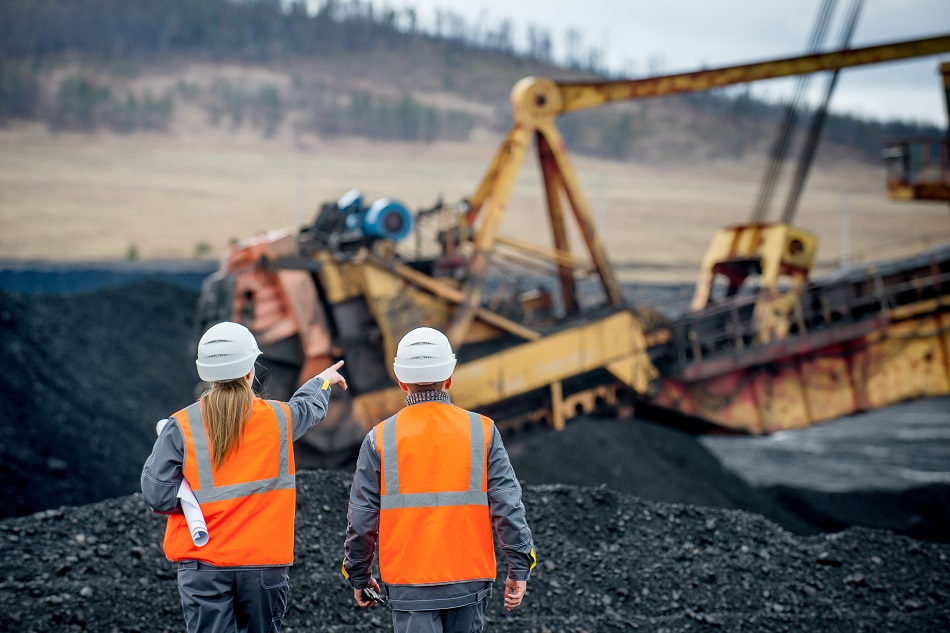
Image Credit: Mark Agnor/Shutterstock.com
The modern mining industry is heavily reliant on information technology, particularly spatial data. Currently, major players in the mining industry are either arranging substantial investments or have already invested in proven spatial data technologies.
Spatial data are extremely valuable across all stages of mineral extraction, from exploration to mine operation and closure.
Finding new mineral sources before the competition is vital for any mining operation. Exploration calls for the analysis of several kinds of spatial data, including satellite imagery and surface geology research. Furthermore, large mines need adaptable, production-oriented spatial data systems to handle administrative issues.
The primary return on investment in spatial data for mining operations is in the production stage. This phase entails resource removal and it is here the entire range of spatial data technologies are utilized to model, oversee, and report on operations. Fleet management systems can track the movement of vehicles while scanning systems can carry out surveys of conveyor systems, mine shafts, and storage facilities.
In addition to supporting decision making and monitoring functions, spatial data technologies can support automation and machine control systems. The global mining group Rio Tinto has a fleet of driverless trucks that rely on spatial data to move ore at mining locations in Australia, and it continues to invest greatly in this area.
In addition to being used in the exploration and production stages, spatial data have also been used to track waste depositing and the last phase of mining activity in a location: reclamation. This final phase can leverage spatial data to track assess forest reclamation quality and the stability of newly created topography.
Spatial data technology is also useful when it comes to analyzing the surface impacts of mining and the safety of mining sites. After the infamous 2010 mine collapse that trapped 33 Chilean miners underground for more than two months, federal governments in Chile and Argentina mandated the use of safety-related GPS equipment in each of the countries’ mines.
Better Safety Through Spatial Data
The demand for spatial data technology is growing as the value of extracted resources continues to rise and regulatory agencies impose more regulations.
Abandoned mines are one particular area where spatial data increases safety in the face of rising demands. Spatial data can be used to protect personnel and facilities from unsafe structural conditions and natural disasters. Recognizing that the spatial data of mining areas are becoming more crucial, the US Congress recently approved $10 million for the digitization of maps of American mining operations and to create mining safety-related technologies.
The Way Forward
While spatial data has created many new opportunities in the mining industry, many more benefits of spatial data have yet to be realized. Many mining operations do not leverage the cross-departmental benefits of spatial data technology. An Australian study discovered several mining businesses could find more uses of spatial data across a broad operation spectrum.
An entire range of still-emerging spatial technologies will likely benefit and even disrupt the mining industry. For example, laser scanning is expected to be used in areas like vehicle control and surveillance. Although it has been in use in other fields for many years, three-dimensional laser scanning is a fairly new technology for mining. The Commonwealth Scientific and Industrial Research Organisation (CSIRO) in Australia has been using 3D imaging technologies in open pit and underground mines to model the environment and topography, significantly reducing the need for geologists, surveyors, and others to be on-site. This kind of spatial data technology also supports design and evaluation from a remote location in a non-disruptive manner.
Recent technological developments have made access to spatial data easier and more intuitive. The continued application of this data will bring significant short-term and long term benefits.
Sources and Further Reading
Disclaimer: The views expressed here are those of the author expressed in their private capacity and do not necessarily represent the views of AZoM.com Limited T/A AZoNetwork the owner and operator of this website. This disclaimer forms part of the Terms and conditions of use of this website.